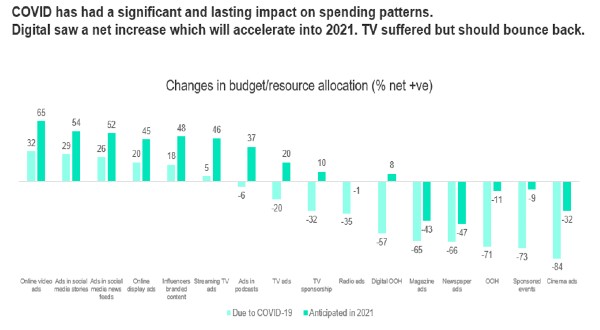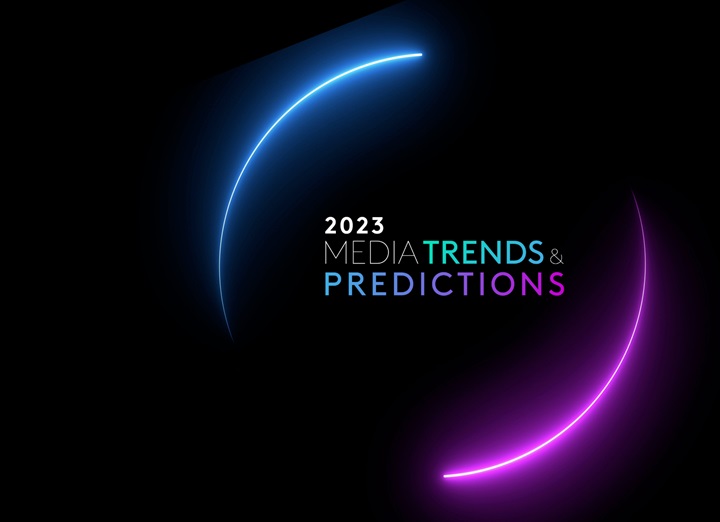In Kantar’s Media Trends & Predictions 2021, we discuss the changes happening in the media world and share our data-supported views about what will stick or twist next year. Some of the trends are more front-of-house: for example, audience behaviours like co-viewing, shifts in streaming video-on-demand habits, and the move from brand activism to action.
But behind the scenes, the impending deprecation of third party cookies – due to privacy and regulatory concerns – means that advertisers will need to understand the dramatic upcoming shifts in targeting and campaign effectiveness measurement. Google’s Chrome browser is phasing out cookies over the next 18 months or so, and Apple will only allow access to consented users’ IDFAs (Identity for Advertisers) from early 2021. These third-party cookies currently perform vital roles for advertisers and publishers, which means big changes in the ways in which the industry can track ad exposure and target digital advertising.
Kantar’s recent Media Reactions research shows that nearly two thirds (64%) of media owners and publishers are worried about the impact of a cookieless world. And nearly half (48%) of marketers worry that their companies won’t be able to provide impactful performance without cookies. But only 40% say their companies are preparing for this – although this is up from 35% in 2019.
Alongside these background changes, digital ad spend – especially online video – has grown this year. Our research also shows that online video’s prominence is gaining ground; it’s forecast to be the top growth format in 2021, according to global marketers. However, the changes to cookies make digital advertising targeting and effectiveness measurement harder to do without foresight and planning.
A new world of effectiveness measurement
In 2021, we predict a move into a new, hybrid world of ad effectiveness measurement; without that, advertisers will only have a partial view of their campaigns. Direct integrations with publishers can gather deterministic exposure data on permissioned panellists in an anonymised and privacy-compliant way where possible. But where publishers aren’t ready, validated probabilistic and analytics-based modelling at scale will fill in the gaps.
WPP CEO Mark Read spoke about data in our recent Future Proof podcast, saying “Clients can use the insights they have about their own consumers – in terms of what they buy, where they buy it, what media they consume, when they consume media, how they shop – and use that to drive the optimisation of the whole marketing ecosystem, including paid media, integrating the marketing ecosystem more tightly…”
And as part of making the ecosystem more efficient, new ways of targeting will come to the fore. We’ll see smart alternatives to targeting that avoid cookies altogether: contextual targeting, time-based targeting, and using syndicated and custom audiences which have been created using fully permissioned audiences.
The major platforms will continue to offer digital effectiveness and targeting solutions based on their own siloed data, but this won’t answer advertisers’ more holistic campaign effectiveness questions. In this new paradigm of regulatory-led privacy initiatives, alternative measures like fingerprinting and plug-ins will only be effective in the short term.
As Mark Read concludes on the Future Proof podcast, “[clients are]…using technology to connect the various parts of what they’re doing together, in a role where the simplistic way of doing things – i.e. the cookie – are going away, and I think that figuring out the data story is going to be critical.”

Editor's note:
Project Moonshot is Kantar’s new global direct integrations initiative, powering our Brand Lift Insights digital campaign effectiveness offer. We’re working closely with many major publishers, including Google, Roku, Pandora and Anzu, and aim to achieve direct integrations with more than 250 digital media platforms globally by the end of 2021. We can match ad exposure to panels in a consented and privacy-compliant way, and our fully validated analytics-based modelling will enable the most complete campaign-effectiveness picture possible. Watch out for new partnerships being announced soon.


